The Best Camera is the One That’s With You

As smartphone cameras become more advanced, they have replaced the need for consumer-grade, and soon, professional-grade, digital cameras.
How an industry declined 80% in less than a decade
With rapid advancements in smartphone camera technology, quality photography that was once reserved for digital cameras or even sophisticated cameras with interchangeable lenses are now becoming more accessible through mobile devices. While high end cameras still appeal to a segment of professional photographers and enthusiasts, for the average consumer, the quality of smartphone cameras have improved to such an extent that picture taking via the phone camera is more than enough for everyday use. The resulting impact on the camera and photo equipment industry has been disastrous, with worldwide camera shipments dropping almost 80% from 2010 to 2017 [1], driven primarily by digital cameras with built-in lenses [2]:
The Winners and Losers
The winners in this digital transformation of photography are smartphone makers, particularly premium brands like Apple, Huawei, Google, and Samsung that are increasingly differentiating their handsets through cutting edge camera capabilities. The losers are manufacturers of digital cameras such as Olympus, Casio, Canon, Fujifilm, Sony, and Nikon. The large disparity in financial performance between the winners (in shades of blue) and losers (in shades of purple) is captured by the stock performance of select publicly traded members in each group over the last 5 years:
The Camera, the Only Smartphone Feature that Matters
As the smartphone market becomes saturated and commoditized by the ubiquitous availability of essential features such as calling, messaging, and social media accessing, smartphone makers are looking to focus increasingly on premium models to make higher margins out of decreasing volumes. To them, one of the few features that still draw consumers into upgrades is improvements in the camera quality [3].
Even so, competition among mobile handset makers deploying the premiumization strategy is cutthroat with relatively new Chinese disruptor Huawei increasing its market share from 10.4% in 3Q2017 to almost 15% in 3Q2018, at the expense of incumbents such as Samsung and Apple [4]:
Over the last few years, the tight race has produced a slew of phones whose advanced camera technology even has professional photographers now embracing the smartphone as “camera alternatives”, and even “starting to give DSLRs a run for the money too” [5]. The investments that smartphone makers put into the camera is also indicative of its central importance to the device. For instance, the camera unit for Samsung’s Galaxy S9 Plus is one of the most expensive parts of the device, with a cost of around $45 out of a total bill of materials of around $376 [3].
Below are some features on the 2 best camera phones in 2019, as voted by Digital Camera World, a digital publication that has primarily reviewed standalone cameras in the past [5]:
Source: Huawei
Huawei P20 Pro: With a three-lens camera and AI to help frame compositions, the P20 Pro features rear cameras that combine a 40 megapixel RGB sensor, a 20 megapixel black and white one, and a 8 megapixel shooter that allows 3x zooming without compromising photo quality. There is an additional 24 megapixel front camera.
Source: The Verge
Google Pixel 3: Using just one 12.2 megapixel rear camera lens and a 8 megapixel front camera lens, the Pixel 3 features a new Night Mode, which offers amazing pictures in the low light. Google has even partnered with famous portrait photographer Annie Leibovitz on her travel portrait project and Conde Nast for its photographers to use the Pixel 3 to shoot the covers of 7 of its magazines including those of Ryan Gosling for GQ and Cardi B for W magazines [6].
The Winners: How They Create Value
- Compact technology enables convenience
As both the hardware for small camera lenses and sensors, and the processing power and software capabilities of mobile phones improved [9], photography technology that once could only exist in a clunky digital camera can now be accessed via a thin, compact mobile phone. The famous photographer Chase Jarvis once said “the best camera is the one that’s with you,” [2] and given the fact that our smartphones are always with us, they offer the most convenience for photo taking at each “Kodak moment.”
- Ubiquity
As about 60% of the world now own smartphones [8], their ubiquity facilitates usage and the lack of need to buy cameras as most people are able to now take photos anytime, anywhere they want without needing to buy any other piece of hardware.
- Ease of Editing and Sharing
The time when digital camera unit sales first started to decline in 2010 – 2011 coincided with a period of fastest growth for Photo & Video mobile apps [7].
This time period saw the rise of mobile photo editing apps such as VSCO, a photography app founded in 2011 that allows users to capture photos in the app and edit them through filters, and of course mobile photo sharing apps such as Facebook, Instagram, and Snapchat. Smartphones enabled users to take, edit, and share photos all on one device in a timely manner. In more recent years, smartphone camera technology further allowed the creation and editing of both long- and short-form videos on a plethora of existing platforms and new ones such as Tik Tok. The virality and strong network effects created by social media facilitated the purchase of more smartphones, especially those with increasingly improved cameras for better content creation and sharing.
The Winners: How They Capture Value
- Initial purchase price
With sky high prices ranging from $650 for the cheapest model of the Huawei P20 Pro to $1,499 for the most expensive version of the iPhone XS, smartphone makers betting on the premiumization strategy are in it to make money!
- Upgrades
The hope for smartphone makers is that about every 2 years, existing customers will upgrade to newer and (most likely) more expensive versions of their existing phones, driven by perceived improvements in the cameras of the new models.
- Monetization of Apps if Smartphone Maker also Controls the Developer Ecosystem
Winners such as Apple and Google, who own both the hardware of the mobile phones and the software operating the phones, will take a commission from initial paid app downloads and/or subsequent in-app purchases and subscriptions.
The Losers: How They Failed to Create and Capture Value
Makers of digital cameras failed to innovate on more convenient and compact form factors that would’ve helped to make their devices more ubiquitous. Perhaps more importantly, they failed to create and develop the kind of ecosystem and network effects that mobile apps have generated for smartphones. As a result, the value that camera makers have been able to capture, in the form of sales price, has also seen consistent annual declines alongside unit shipments [10].
Source: [10]
Camera makers now only have a few niches of categories like action cameras, large-sensor photo-enthusiast models, and superzooms to survive on. However, even two of those niche areas are under attack by smartphones. Larger sensors on cameras have enabled easier deliberate control of the depth of focus in photographs, giving the photographer more creative control. This capability is now being replicated by depth estimation technology that has now become standard for the main camera on high-end phones, whether through dual cameras (on iPhone XS and Samsung Galaxy S9 Plus) or with dual-pixel technology (on Pixel 3). In terms of the superzoom niche, we just saw how Huawei’s P20 Pro now allows 3x zooming without compromising photo quality [9]. To me, it seems to be just a matter of time before smartphones dominate all three niches and decimate camera makers.
Works Cited
[1] Felix Richter, “What Smartphones have Done to the Camera Industry,” Statista, https://www.statista.com/chart/15524/worldwide-camera-shipments/, accessed February 2019.
[2] Felix Richter, “Digital Camera Sales Dropped 84% since 2010,” Statista, https://www.statista.com/chart/5782/digital-camera-shipments/, accessed February 2019.
[3] Steve Ranger, “The camera is now the only smartphone feature that matters,” ZDNet, https://www.zdnet.com/article/huaweis-triple-camera-p20-pro-shows-the-camera-is-now-the-only-smartphone-feature-that-matters/, accessed February 2019.
[4] “Global smartphone shipments down 6.0% in Q3 2018 as the leading vendor and the largest market face challenges, according to IDC,” IDC, https://www.idc.com/getdoc.jsp?containerId=prUS44425818, accessed February 2019.
[5] Marc Chacksfield and James Peckham, “The best camera phones in 2019: ultimate smartphone cameras on test,” Digital Camera World, https://www.digitalcameraworld.com/buying-guides/best-camera-phone, accessed February 2019.
[6] James Vincent, “Google got legendary photographer Annie Leibovitz to switch from iPhone to Pixel,” The Verge, https://www.theverge.com/2018/10/9/17955832/google-pixel-3-camera-annie-leibovitz-partnership-iphone, accessed February 2019.
[7] Paul Sawers, “Photo and video is the fastest growing mobile app category, according to Flurry report,” The Next Web, https://thenextweb.com/insider/2012/05/08/photo-and-video-is-the-fastest-growing-mobile-app-category-according-to-flurry-report/, accessed February 2019.
[8] “Smartphones are common in Europe and North America, while sub-Saharan Africa and India lag in ownership,” Pew Research Center, http://www.pewglobal.org/2018/06/19/social-media-use-continues-to-rise-in-developing-countries-but-plateaus-across-developed-ones/pg_2018-06-19_global-tech_0-03/, accessed February 2019.
[9] David Cardinal, “Will phones soon finish off the camera market?” ExtemeTech, https://www.extremetech.com/electronics/277457-will-phones-soon-finish-off-the-camera-market, accessed March 2019.
[10] “Global digital camera market share report – part 1,” ProMuser, https://promuser.com/markets/global-digital-camera-market-report, accessed March 2019.


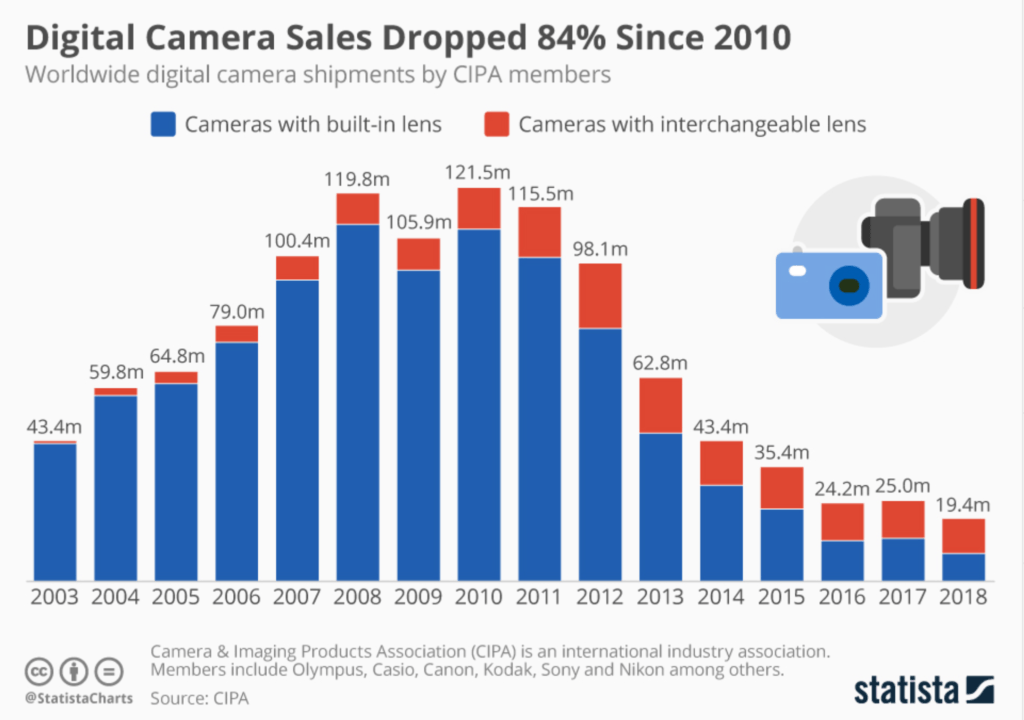


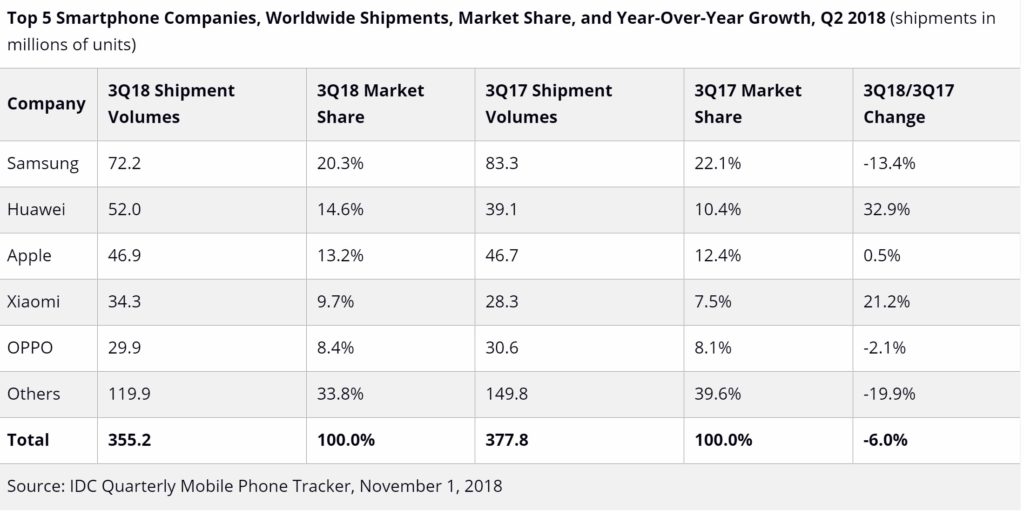
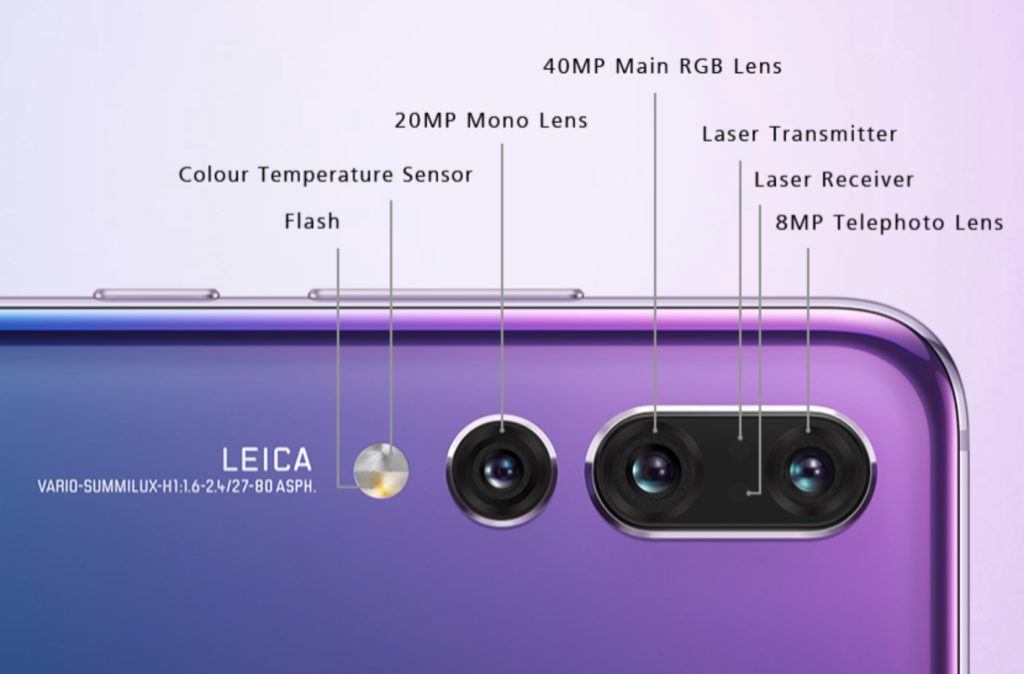
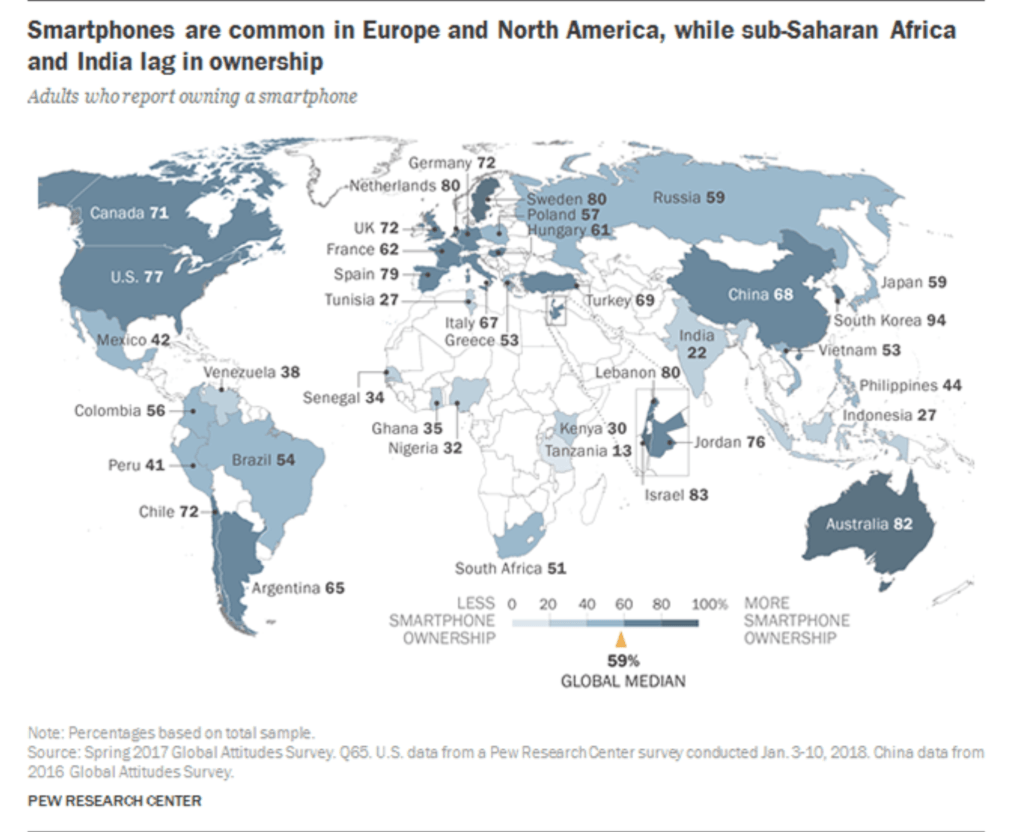
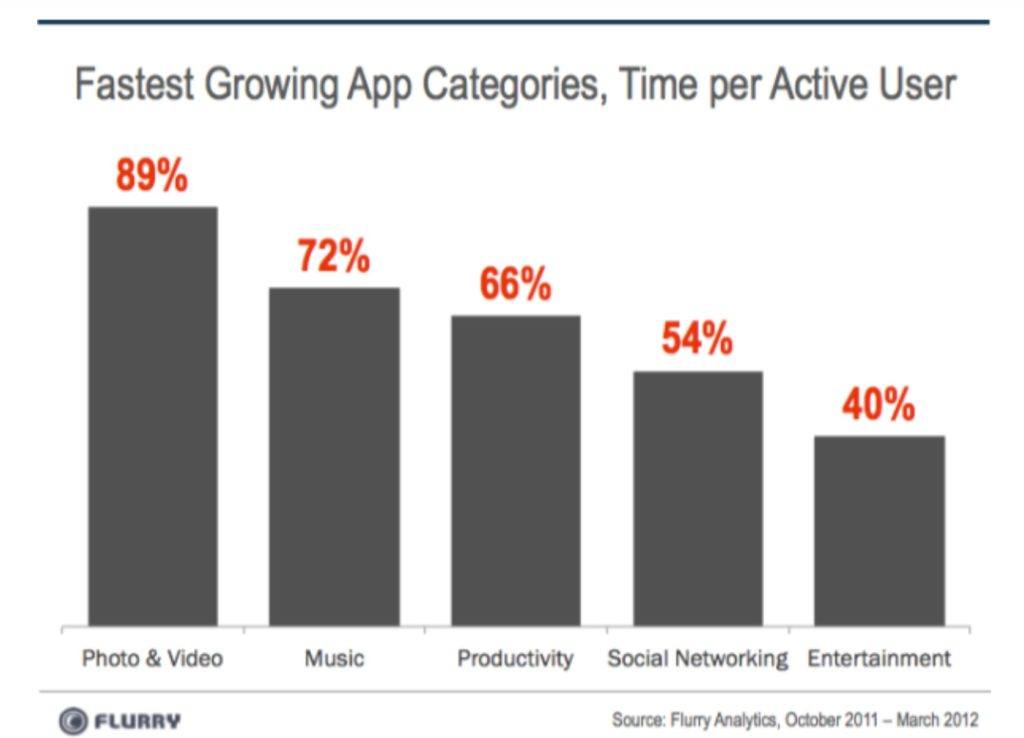

Super interesting, and definitely matches my experience of never using my DSLR 🙂 Curious as to what kind of future you see for the traditional camera companies like Kodak: what kind of strategy could they employ to keep pace with digital innovations?
I actually just received a ‘point and shoot’ digital camera for Christmas and am interested if my purchase, as well as a number of friends, is anecdotal or a trend in a swing back to more high quality hardware? I think with the stagnation of how smartphone cameras are improving (aside from innovations in how they use ML to improve quality) that consumers (or at least a small subset) may show demand for higher quality images — maybe there’s a niche for cameras that complement smartphones?
A lot of photographers like Annie Leibovitz are actually now moving from professional cameras to phone cameras to do professional shoots and while there is certainly a segment of the population still devoted to their cameras, I think on the whole people are moving to just using their phones for as many activities as possible. The traditional players may be left with supplying parts to the phone makers! But this comes at a huge loss as cameras that once sold for hundreds or even thousands of dollars now come in a form factor that command $45 from handset manfacturers.
Very interesting article.
I’d be curious to see your first chart including shipments of cameras in smart phones, as I wonder if the overall camera market is still growing or has flattened out as we have consolidated to a single photo device. Which then leads me to wonder who is building the cameras in these smartphones, I was under the impression companies like Sony still produced a lot of the smartphone cameras, but are obviously getting squeezed in the value chain now that they aren’t the OEM.
Your article also reminded me of the concept that the rise of smartphone cameras has theoretically proved that Bigfoot/Sasquatch doesn’t exist, as we now have a camera with us nearly 100% of the time but still don’t have any photo proof of Bigfoot (as opposed to the old adage that people saw him but didn’t have a camera with them to prove it). Just an interesting thought.
Thanks, CN! This is a true transformation that impacts all of us on a day to day basis. While I agree that the smartphone makers are huge winners in this conversation I wonder if any of the value creation is captured by the camera producers that supply companies like Apple and Samsung. It looks like Sony is the maker of the Iphone 8 Camera (see article below), so I’m curious if they have also “won” from this transition or if they have been driven down to commodity prices?
https://techcrunch.com/2017/09/22/iphone-8-teardown-reveals-few-surprises-but-more-camera-details/
This is such an interesting post, thank you for sharing! In fact, I completely agree. I used to work for Annie Leibovitz and as one of the most preeminent photographers of the 20th century, it was always fascinating to me that she could be heard musing that the iPhone camera was really all she needed. In fact, I think that Apple, in particular has latched on to the fact that the camera is really the only phone feature that matters. Just think about its recent advertising campaign for the iPhone X which showed large, full-bleed images that were crisp, artistic, and vivid alongside the tagline “shot on the iPhoneX.” Its interesting to think of our mobile phones as really a digital camera that can do messaging, emails, etc. rather than the other way around.
Very interesting post and analysis! I agree that digital cameras’ market share is shrinking, but I don’t think they would necessarily die out. Think about the two major segments of people taking photos – 1) everyday users who use their smartphone to record daily life, 2) and photographers and enthusiasts who consider photo taking a profession or hobby. The second group of customers, although a relatively niche segment, still have a high willingness to pay. I think digital camera manufacturers should focus on addressing this group’s need and charge a premium from them. In fact many product innovations are happening in this space. OSMO for example, is a camera stabilizer produced by DJI to help users create stable and smooth videos.[1] Many vintage fans even went further back to the film era and bought Polaroid’s new versions, which added new features such as bluetooth and a mobile app.[2] Although digital camera lost its battle to smartphone manufacturers in addressing the everyday photo taker segment, my view is as long as they keep innovating they still stand a chance to survive.
Reference:
[1] https://www.dji.com/products/osmo
[2] https://www.polaroid.com/products/category/all